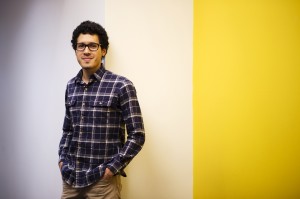I found the course readings on discotechs, design jams, and hackathons to be very interesting and relatable, despite not being a computer science/design person myself. Much of what I learned from the readings was new information to me although I did have some inkling as to the various perks and problems of hackathons thanks to hearing about many of my friends’ various experiences.
I agree with Charlie Detar that hackathons don’t, or can’t, solve big problems. It is unreasonable to believe that solutions to large scale issues can be created in the span of a couple days. However, because I have such limited knowledge of and experience with hackathons (and discotechs, and design jams) I was under the impression that most hackathons were meant to be a space where one can meet other people interested in tech and collaborate on fun projects. Perhaps this is because the only hackathon I have ever been to is WHACK, Wellesley’s hackathon, which I have heard offers a more inclusive and relaxed environment than other hackathons. WHACK is also great because it caters to women in tech, who are often marginalized, and offers them a safe space to hack. I believe that this specific hackathon serves a good purpose because it allows women to be comfortable doing design with others and invites people who may not have a tech background explore in a welcoming environment. I understand that this is not the norm, though, and that they can sometimes foster more toxic environments.
From the many friends I have in CS and tech I know that there is an unhealthy lifestyle associated with hacking that is almost glorified within these departments and at hackathons. People often stay up late and get very little, if any, hours of sleep and really on heavily caffeinated beverages to stay awake. While I knew there was pressure for participants to sleep as little as possible in order to “maximize” productivity at hackathons, I was shocked to learn that there were sometimes no sleeping areas available or that hackers were “restricted to sleeping on concrete slabs.” It’s upsetting that the people organizing the hackathons aren’t prioritizing participants’ health which can then lead to participants picking up habits they start at hacks and carrying them into their own life. Going without sleep or proper food and hygiene is not a sustainable way to live nor does it contribute to being productive when the point of these hackathons is to find solutions to problems, not create more.
From what I have seen personally, though that experience was limited, and what I learned through the readings I believe that hackathons are worthwhile and important so long as they are organized with reasonable goals in mind and with programming that helps to foster a more healthy hacking environment. Hackathons should help promote interest in tech and hacking instead of trying to tackle on impossible issues. This way we can grow a network of people who can later work on these issues with the amount of care and time they deserve and need.
